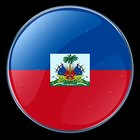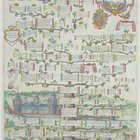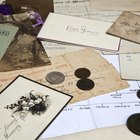
If all you want to do is to buy a few pieces of tartan memorabilia, plenty of lists and websites are available that tell you which clan your surname ‒ or your closest ancestor's surname ‒ is associated with. Tracing your own family line to a specific branch of a specific clan, or seeking formal membership in a clan organization, is more complicated. You can find resources to help you make those connections, but you should be prepared to invest a lot of time and effort to take full advantage of them.
You Don't Necessarily Have a Connection
First, you need to understand that knowing a great-grandparent or other ancestor arrived from Scotland doesn't mean much. Your family may have lived in Scotland for a generation or two without having Scottish roots, or they even may simply have embarked from there because it was convenient. Many family names widely used in Scotland, and associated with various clans, also occur traditionally in England and Ireland, and it's equally possible that your family line originated in one of those countries. Finally ‒ and this is an important consideration ‒ many impeccably Scots families have no traditional clan affiliation.
Scottish Clan Names and Septs
To complicate things further, a given surname may have links to more than one clan, and a single clan may host numerous surnames. The main hereditary line of clan chiefs was only part of the story: There were also branches of the family founded by younger sons of its chiefs, known as cadet branches; and branches of the family using different last names, called septs, often descended from the chief in the female line. There are also family lines without a direct blood relationship to the chief, but which hereditarily owed allegiance to the chief and were considered to be part of the clan. Scotland's turbulent history meant that many of these families were split between different clans, or they shifted between clans as their respective fortunes rose or fell.
The Special Problem of Clan Gregor
One spectacular example of a clan's rise and fall, and its effect on your search, applies to the MacGregors. Clan Gregor was caught up in a centuries-long series of feuds with its neighbors, notably the powerful Campbells, and this makes the MacGregors one of the most difficult clans to research. Families originally associated with the MacGregors were carved away by the Campbells over the centuries, and in 1603 ‒ after yet another skirmish and some royal lobbying by the MacGregors ‒ the very name MacGregor was abolished by royal decree. This forced the surviving MacGregors to assume a number of aliases, many already associated with other clans, until that decree of proscription was finally rescinded in 1774. Some MacGregors reverted to their traditional names, and others did not, making them an especially complex problem for both amateur and professional genealogists.
First, Work From Your End
So how do you go about tracing your own Scottish lineage? The first step is to establish your own family tree in as much depth and detail as you can, on both sides of the Atlantic. Be aware that multiple spellings often exist of family names, sometimes because of "Americanization," but also because the shift from Gaelic to English meant that a single Scottish name might have multiple transliterations. Finding years and places of birth for your ancestors is also important, because it can help you resolve the uncertainties that arise from multiple spellings of a name, multiple branches of a family or multiple families with the same name that belong to different clans.
Next, Work From the Clan Side
Once you've established your family line to the best of your ability, you can start matching it up to Scottish public records and the records of the individual clans. This is where geography becomes important: Clans are associated with specific locations at specific times in their history, so if your name is associated with multiple clans, your ancestor's place of birth can be a vital clue. Ideally, you'll be able to identify one or more specific ancestors who correspond to known members of a clan's line. If you want to establish formal membership in a clan, documenting that relationship through the written record is your best approach.
The DNA Option
In recent years, DNA testing has become another viable method of establishing a family connection. Unsurprisingly, Clan Gregor ‒ with its especially difficult identity issues ‒ has taken a strong lead in this area, and it has a well-established DNA testing program for those who wish to establish a link to the MacGregor clan. DNA from one specific, anonymous MacGregor ancestor is the benchmark, and shared DNA is considered adequate proof for clan membership.
Related Articles

How to Trace Haitian Ancestry

How to Find Out Where Your Family Came ...

How to Trace Your Family Tree for Free

What Is a Family Crest?

What Is a Paternal Family Tree?

Family Heritage Definition

How to Find Ancestry in Singapore

How to Find Your Bloodline

How to Find Out if You Are Related to ...

How to Find Twins on Pedigree Charts

What Is the Meaning of Family Reunion?

How to Map German Surnames

How to Find Family Military Photos

How to Find Someone That Died Years Ago

How to Find Your Biological Father ...

How Much Money Does a Refugee Get from ...

How to Give a Written Analysis of a ...

How to Find Out If I'm Related to ...

How do I Find Lost Relatives in South ...

What Is a First-Degree Relative?
References
Resources
Tips
- Check variant spellings of your surname. Not only might your name have been anglicized when your family immigrated, but different branches of your sept may have spelled the name in slightly different ways. For instance, MacAslan, MacAuselan, MacAuslane and MacAusland are variant spellings of the same name.
Writer Bio
Fred Decker is a trained chef and prolific freelance writer. In previous careers, he sold insurance and mutual funds, and was a longtime retailer. He was educated at Memorial University of Newfoundland and the Northern Alberta Institute of Technology. His articles have appeared on numerous home and garden sites including GoneOutdoors, TheNest and eHow.
Photo Credits
Hemera Technologies/Photos.com/Getty Images